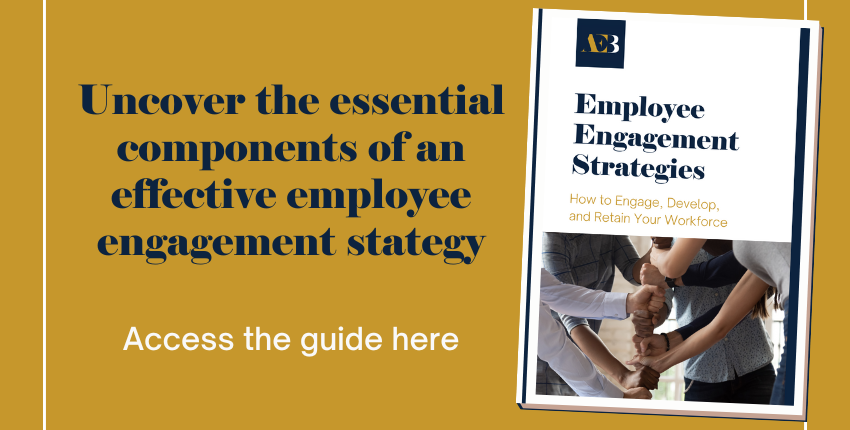For any business, the largest portion of your human resource efforts are focused on payroll, benefits, and compliance related issues. This leaves a very small portion of time and resources for talent acquisition — the process of sourcing, recruiting, and hiring top talent. Unfortunately this also means that employee retention efforts can often go largely unnoticed, until it becomes a problem anyway. While most organizations accept a percentage of employee turnover each year, the best companies also work to keep their turnover rate as low as possible.
In 2019, the U.S. Bureau of Labor Statistics reported that individuals between the ages of 18 to 52, held an average of 12.3 jobs. A year later, another BLS study reported that the median number of years with a current employer (across wage and salaried employees) was 4.1 years. This length of tenure was consistent with 2018 figures where that time was only slightly higher at 4.2 years.
While turnover can be employee initiated for personal reasons (voluntary turnover) or employer initiated for performance or business reasons (involuntary turnover), a 2019 Retention Report from the Work Institute revealed that “3 in 4 employees who quit could have been retained by their employers”. Only 22% of surveyed employees left due to relocation, retirement, or being fired.
Here’s one more set of labor statistics to consider. In April of last year, Catalyst.org published that across all U.S. industries, 27.9% of employees had quit their jobs in 2019, which was up four percentage points in just four years. Currently the average turnover rate for U.S. companies is 22%.
So why are good employees leaving their companies? More importantly, what can you do to dissuade them and reduce high turnover if your numbers are creeping upward?
Causes of Employee Turnover
While the exact reasons are as varied as the individuals who quit their respective roles, a few common themes do emerge when you examine the available data.
Lack or loss of corporate vision
Starting with the biggest underlying factor for employee turnover is when employees no longer have a vision for their future or for where the strategic direction of the company might be going. Employees want to know they have a future with a clear progression in their career development. This would include having access to financial gains and increased compensation as their levels of experience, knowledge, and responsibility advance.
The other factor in this area happens when employees discover their expectations for their role and the entire organization no longer matches with their reality. Perhaps they expected faster career growth or their role has adapted in a way that no longer aligns with their ideal. Their feelings don’t necessarily need to match reality, but when their assumptions about their respective jobs or beliefs about the company fade, so does their desire to remain in place.
Misaligned management styles and practices
You’ve likely heard this saying plenty of times: people don’t leave bad jobs, they leave bad bosses. While not entirely true, the styles and practices of managers and business leaders can have a direct impact on employee turnover.
This can be the result of personality differences, communication styles and consistency, how problems are managed and resolved, or the level of support given. How managers manage may not even be “wrong” based on any number of definitions, but when the approach and practices are out of sync with what employees expect or with what could encourage the best performance from them, a desire to go elsewhere increases.
The bigger risk of employee turnover happens when there is a lack of trust in management. Employees will only follow leadership for just so long when they don’t trust them, and it’s often communicated as a lack of respect.
Questionable business practices
Employees won’t always understand every business decision company leadership will make. And not every decision needs to be explained in detail. However, when multiple business decisions and policies come into question, that seed of doubt can get planted pretty deep in the minds of employees.
Practices of nepotism or cronyism quickly discourage hopes of establishing long-term careers in those on the outside of family or old school networks. Likewise, repeated bad hiring decisions also call leadership’s judgment into question. These are more examples where lack of trust comes into play, as well as a lack of respect.
Interestingly, many of the same causes of low employee morale are the same causes for employee turnover. Some people just react to negative situations faster than others.
Ways to Reduce Employee Turnover
For organizations that want to manage employee turnover and improve employee retention, it is important to pay attention to both sides of this equation: why people leave and why people stay. Your goal is to not just understand and reduce the reasons why employees leave but to simultaneously appreciate and increase the influences on employee retention.
However, don’t assume that low turnover automatically means there is high job satisfaction or that you will have long-term employee retention. The two are not mutually exclusive. Go back to your employee value proposition. Your EVP isn’t just a reason why people join your organization. It’s also a reminder of why they stay.
By the way, if you don’t already have an employee value proposition, learn the benefits of this tool and how to create your own.
So, how can businesses effectively counteract high employee turnover and improve their retention rate?
Instill confidence and direction
People like to support causes they believe in with a clear purpose and intent. The same is true for your employees. Provide them with a clear purpose for why their role exists and a reason for how their efforts matter. Give them a cause to champion. Remember why your organization started and the challenges it hopes to solve. Now make sure your employees know it and can see the results of what they are working towards.
To help with establishing and setting that corporate vision for new employees, start your onboarding process from the moment your hiring offer is accepted. Reinforce your mission and vision. Share your values and how your new hire can support them. Then start including them into company events and communications to help integrate your new employee.
Lead, follow, or get out of the way
Part of effective management is tailoring your leadership style and approach to the individuals you are leading. Do your employees need clear direction and guidance? Lead them with purposeful intent to help them learn and inspire them to grow.
Some employees produce their best results with a coach or mentoring approach. Allow them room for trial and error. Manage them in a way that clears major obstacles, and then step back to celebrate their victories. Yet, sometimes managing requires a little of all three approaches at once. Effective leadership that mitigates employee turnover remains adaptive to what their teams need.
Be intentional to uncover problems and challenges and then just as intentional to resolve them. Help your employees prioritize their work-life balance while ensuring you maintain a healthy balance as well. Challenge your team with projects that excite them and encourage the sharing of fresh ideas.
Trust the process
Processes ensure consistency and continuity while reducing the risk of error and future problems. No one is perfect. That means even the most trusted of leaders is going to make mistakes. The difference between those who retain their employees and those with higher turnover is their integrity in the process. Own up to mistakes and work to correct them as quickly as possible.
One process you should be sure to follow is your hiring process. If your turnover rate is creeping up, make sure one of the areas you examine is how you are sourcing, recruiting, and vetting new talent. Make sure you’re not creating additional problems or needlessly influencing employee turnover with poor hiring decisions.
Change is inevitable, but employee turnover shouldn’t be what changes most about your organization. Discover how to proactively retain your employees and communicate their value to you in our Employee Engagement Strategies guide.


.png)
.png)





